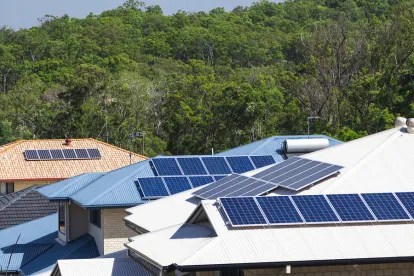Energy storage has frequently been cited as the critical missing link in an electric infrastructure designed to maximize the benefits of cheap, renewable energy. Because energy from the sun and the wind is inherently intermittent, it has not been able to satisfy a round-the-clock need for electricity. And in many places we’ve built more renewable capacity than we can use, when the sun is shining, or when the wind is blowing. For example, in sun-soaked California and the West, electric grid operators have recently been confronted by the challenge of “over-generation” during peak solar hours of the day, which can result in the curtailment of solar generation to avoid overloading the grid with electrons. Similarly, in Texas, so much wind blows at night that the electricity off-takers can sometimes get paid through “negative” power prices to use the wind power.
For California, a state that has set its electric grid on a path toward 50% renewable by 2030 (SB 350 (De León)), and one that is considering a 100% RPS by 2045 (SB 100(De León)), the question of energy storage has taken on a practical significance. And regulators at the federal and state level have been quite busy taking down barriers that have made the increased adoption of energy storage resources impracticable.
Today Bud Earley of Covington blogged about the recent approval at the Federal Energy Regulatory Commission (FERC) of its 2017 electric storage rulemaking. That rule set out broad market criteria for the participation of energy storage resources in regional electricity markets, and left the question of distributed energy resources (DERs), for a later date.
Given its innovative policy work on both fronts, California is a natural market to look to for policy models that may be relevant beyond the California ISO (CAISO). In California, state regulators have already begun seeking comment and setting rules for the participation of both DERs and energy storage in the market. The CAISO has begun, for example, reviewing applications from some companies, including investor-owned utility companies, to seek approval as distributed energy resource providers (DERPs); and the CAISO has sought and received approval from FERC to seek tariff proposals that allow DERPs to aggregate and sell resources in the grid. And with respect to energy storage, the state regulator — the California Public Utilities Commission (CPUC) — recently issued a decision for new “multiple-use” applications for energy storage, which allow storage providers to “stack” various services.
This CPUC decision, in combination with FERC’s rule, and adjacent statewide efforts on DERs, will continue to reduce friction in the market for energy storage. The concept of “stacking” is designed to allow the grid to more completely take advantage of the various services offered by energy storage technologies (as well as allowing storage providers to more completely market and sell the various incremental values storage provides to the wholesale market, the transmission and distribution grids, the customer, and to resource adequacy). For example, a storage facility that might ordinarily have been under contract for frequency regulation services could, in a stacking scenario, also sell services to provide when it would have otherwise been idling, such as additional capacity, resource adequacy, or peaking.
The CPUC’s decision adopted eleven interim rules outlining how these multiple-use applications should be evaluated, and established a Working Group, to be convened by the CPUC Energy Division, and in coordination with the CAISO, to “develop actionable recommendations.” For example, the CPUC specifically sought input from the Working Group on possible modifications to Rule 6, which deals with how storage resources may contract for reliability services. Notwithstanding the work that remains to fine tune the rules in this decision, it holds the promise of providing additional revenue streams to energy storage providers who in turn might develop innovative financing and service agreements to bring projects online. As California begins to turn toward preferred resources offerings in lieu of traditional “must-run” contracts or to replace traditional energy infrastructure (see, e.g., Aliso Canyon procurement), the prospect of valuing energy storage projects for their various benefits introduces a new degree of financial competitiveness for storage.
In addition to engaging through the forthcoming CPUC and CAISO Working Group, stakeholders have been encouraged to participate in the state’s energy storage process through the CAISO’s Energy Storage and Distributed Energy Resources (ESDER) initiative. And the state legislature has also been active on this topic in recent years, introducing numerous bills (some of which, such as AB 2868 (2016), have passed) with the intention of deploying additional storage resources into the California grid; this year’s legislation on a 100% RPS (SB 100 (De Leon)) and on a regionalized grid (AB 813) (Holden)) are likely to address energy storage in some capacity.




 />i
/>i

